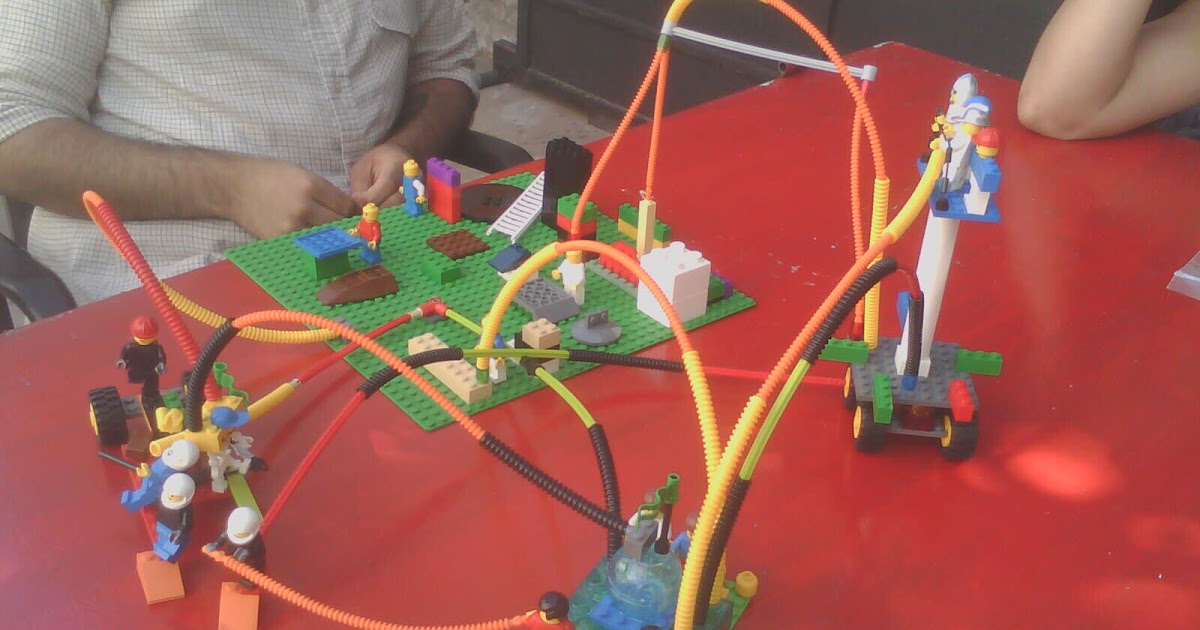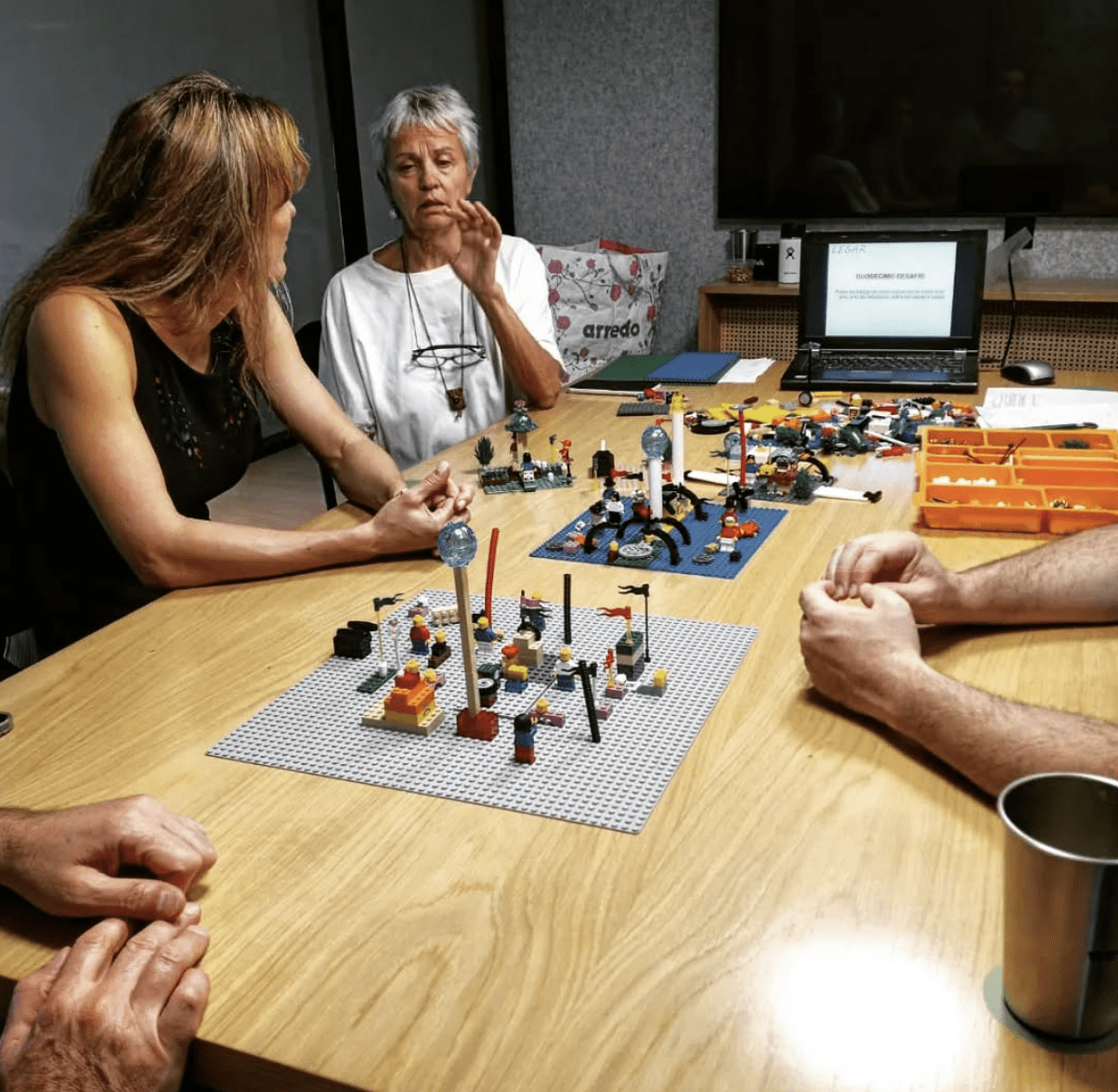Written by Patricia Kistenmacher and team
Magic happens on the table
My career
A personal and professional bond links me to Stone Soup since its beginnings.
During the first years, as a Consultant and then as a member of the Stone Soup Serendipity Network. It was always worth sustaining the link despite the distance, in light of the richness of the shared learning.
My service to the Community as a facilitator focused precisely on offering serious play as a profoundly transformative tool, as Cláudia Pedra and Inji Elabd mention in the article published on March 6th. In 2011, under the guidance of Per Kristiansen, at that time still linked to the LEGO© company, I became certified as a Workshop Designer and Facilitator with the LEGO© SERIOUS PLAY© (LSP) method.
This method is oriented to achieve the highest performance of the teams, with the least time investment possible, while they give their best, playing and building solutions with LEGO© bricks. The method is based on the constructivism of Piaget (1896-1980), a Swiss biologist who observed how children build their knowledge from basic manual experiences. With LSP, adults, in the same way as in our childhood, construct knowledge while playing with bricks. The method is also based on Papert (1928-2016), a disciple of Piaget, who, by revising his theories and testing them in the field of learning, developed constructionism. This privileges concrete thinking based on the production of something external to oneself, making the abstract visible, tangible and therefore understandable and more accessible to others. During LSP workshops we can “see” the thoughts of others.
The method has a core 4-step process (1. Formulate a question oriented to the defined objective. 2. Answer it by building with LEGO@ bricks. – 3. Narrate the meaning of the model built. – 4. Share and reflect on the lessons learned from the models built). Teams work at tables of 10/12 people per facilitator. The workshops can last from 4 to 16 hours, depending on the problem to be solved. The feedback from the workshops is based on the compilation of the central photos and key words, precisely because when the models constructed are observed again, the learning that took place during the workshop is recovered.

Until 2023, I worked with companies, governments, NGOs, individuals. Beyond the differences between organisations, their working spirit and the characteristics of the team members and projects, the results have always been of high impact for the clients. Practically all cases prove that the solutions were already within the teams themselves, only a method was missing to make them visible and to ponder which one to choose collectively, as there is always more than one possible way out of the crossroads. Likewise, in the vast majority of cases, once the work was finished, the increase in commitment to the tasks that the participants carry out on a daily basis in their areas of work was noticeable.
Two experiences: Sincelejo, Colombia and Audiovisual Trade Unions in Latam
This work was carried out in Sincelejo, Colombia in 2011, bringing together 75 people from five black communities in Montes de María, a territory destroyed by violence between guerrilla and paramilitary groups from different governments.
That year, the government succeeded in getting the Victims’ Reparation Law passed by Parliament. The aim of the workshop was to get the communities to define what they wanted to ask the government as reparation for their territories. Carrying out this facilitation left a strong impression on me as the participants were from very humble rural communities, with little education and very vulnerable life histories. Their lives and those of their families had been in danger countless times. Despite, or perhaps because of this, they were able to carry out the work with great enthusiasm, including the children in the construction work.
Each community visualised their real and priority needs. The priorities were: lack of access roads and communication, lack of access to health, education and basic services for a dignified life (drinking water was the only one mentioned, but there was a lack of access to electricity, natural gas, internet, etc.). This allowed them to present a single request to the government as a region of Montes de María, in which the collective needs were distinguished from the particular needs of each community.
It is interesting to note that, in terms of the construction of social actors that made up their social scenario, the five communities initially constructed the state as small and insignificant. This was related to the level of distrust in the state. But after shared reflections, they realised that this actor was key to improving their quality of life. As a result, the five groups proceeded to reconstruct the model, transforming the state into an actor of the right size to negotiate the improvement of their territories and lives.
Another interesting experience was the workshop held in 2018 with the Audiovisual Unions of Latin America, brought together by Union to Union from Brussels.
Gathered in Montevideo, representatives from all over Latin America, they built their evaluation of the three years ended and the expectations of joint work for the next three years. All this, finally evaluated in an external report, delivered to Union to Union in 2021. What was interesting in this case was that the work began by highlighting the diversity of the evolution of trade unionism in each country.
At one extreme, Argentinean trade unionism had a consolidated position as leader in the region. At the other, Colombian trade unionism, incipiently organised, working under conditions of persecution and threat. In between, all sorts of variants. At the beginning, there was more curiosity than confidence in the method. Gradually, they were able to transcend differences and prejudices, to deepen the moments spent thinking about themselves and thinking for others. As they built and shared visions, participation levelled out so that they felt they were peers, able to share and cooperate, revitalising the somewhat dormant cooperative principles of trade unionism. The more educated trade unionists with more closed views were able to open up and listen to the new generation, adding new ways of thinking to their daily work.
In short, this method facilitates the democratic participation of each person at the table.
- It allows knowledge to emerge that is latent but without space to manifest itself in the established structures and habits of organisations.
- It increases the level of commitment to the objectives of the company or organisation of which you are a part.
- The play situation allows emotions to flow naturally and provides a nurturing environment to deal with them.
- The ratio between the investment of time and the achievement of expected results is shortened.
- It allows for the establishment of time-bound benchmarks to assess achievements in order to rectify directions.
- It helps to analyse potential risks and design risk mitigation as well as to identify opportunities.
- It allows to build scenarios, identify actors, understand their links and visualise possible futures.
- New products can be designed, markets can be expanded, companies’ presence can be expanded.
Generational transfer
In 2023, I had the great satisfaction of welcoming a new generation of facilitators. My two daughters, Dr. in Genetics Catalina Cortada and Lic. in Sociology Micaela Cortada, became certified with another trainer, Jack Reymond, a member of the Association of Masters Trainers, the school of Per Kristiansen and Robert Rasmussen.
Since then, we have been working together in LEGAR. We are open to work with anyone who has the courage and vision to look for solutions in a playful way. At the same time, within the wide range of possibilities offered by this method, we are interested in focusing on family businesses and generational transition.

The international scene is changing dramatically. More than ever, this method is appropriate for working in times when uncertainty and unpredictability are the order of the day. A flexible, fun, concrete method that opens up unthinkable and yet possible solutions. Another opportunity for the Stone Soup Serendipity Network to multiply its impact and strengthen its position.
A possible cooperation? LEGAR – Stone Soup
LEGAR was invited to participate in a Webinar with Stone Soup’s consultants. We found it fantastic and challenging to share our expertise with such a versatile community with presence in very distant territories. We found genuine interest from the community. We found that LSP could provide answers to the different concerns presented, and we confirmed once again the power of this tool, the possibility of working in depth and simultaneously having fun together.
During the virtual meeting on February 10th, we were able to perceive the depth of the consultants’ links with their fields of work and their genuine concern to deepen their knowledge of the tool. We found an attentive listening that reveals consultants eager to expand and improve their possibilities of approaching their clients.
The realisation that the answers lie within teams is growing. To take advantage of this available tool is to become an agent of change while recognising the value of individual contributions in each team.
Thanks to Stone Soup for bringing LEGAR into dialogue with global change agents.
Patricia Kistenmacher and team.
LEGAR
@legar_lsp

